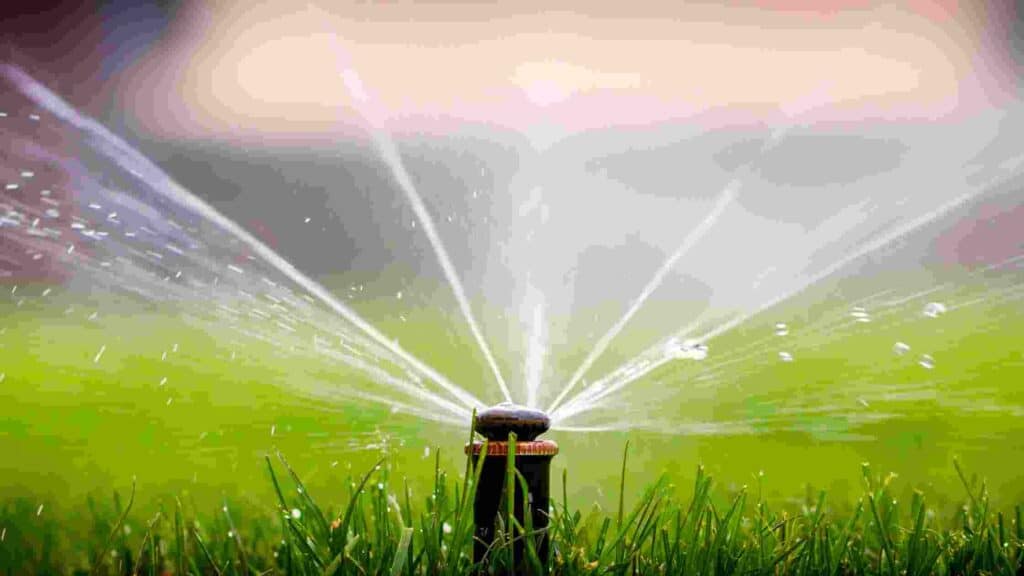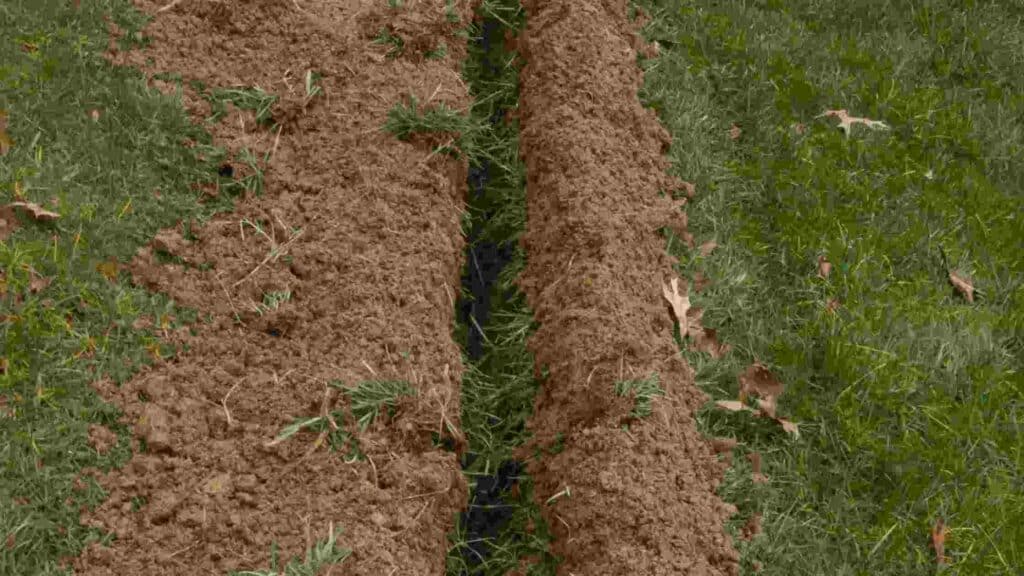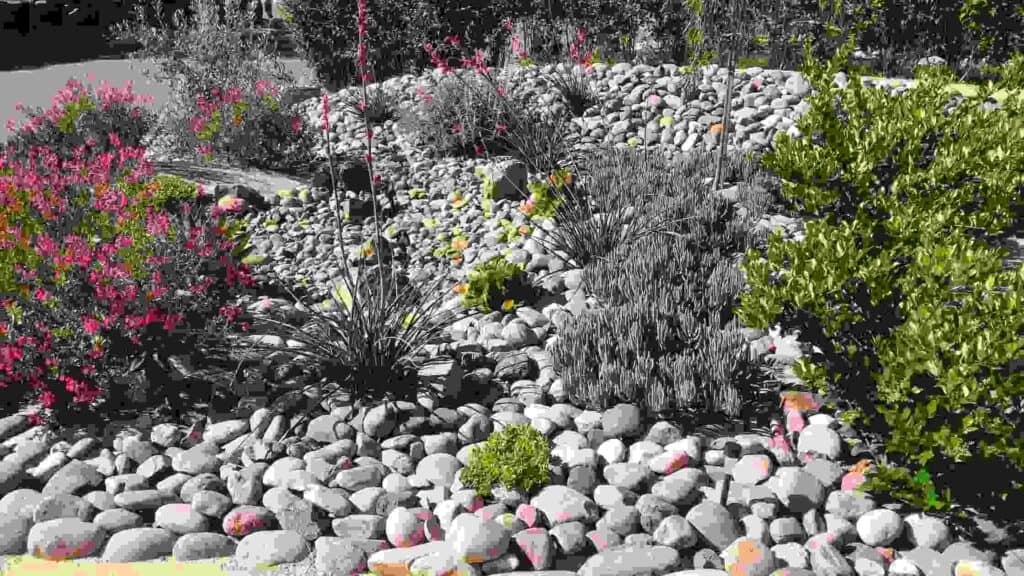A waterlogged backyard can be a persistent source of frustration. Fortunately, there are several strategies for how to soak up excess water in yard. However, it’s crucial to approach this task with a well-informed strategy.
If your yard transforms into a makeshift pond every time it rains, you’re likely seeking a solution to effectively drain excess water.
Beyond the inconvenience, such conditions can attract unwanted pests, including mosquitoes, making it imperative to address this issue promptly.
How To Soak Up Excess Water In Yard
Before embarking on major changes, it’s advisable to explore some fundamental considerations that might help mitigate the issue.
1. Reevaluate Garden Beds
If water tends to pool around your garden beds or other segmented areas of your yard, it’s possible that your landscaping choices are impeding proper drainage.
In such cases, the water cannot disperse due to these physical barriers. Introducing a discreet drainage pathway, such as an underground conduit beneath paving stones or a subtle trench in the soil, can facilitate water runoff without compromising your garden’s aesthetics.
If these initial steps do not address your situation adequately, consider exploring more specialized solutions to address the specific challenges in your waterlogged backyard.
2. Reduce Watering

Excessive watering might be a significant contributor to the water accumulation in your yard.
If you regularly irrigate your lawn and plants, consider reducing the frequency. Adequately hydrated plants are less likely to absorb excessive moisture.
Over-watering can lead to the undesired consequence of a waterlogged backyard.
3. Grading And Landscaping For Standing Water In Backyard
In cases where your yard lacks proper grading – a gradual slope directing water away from the property – flooding or water pooling can become persistent issues.
Rectifying this requires landscaping expertise. Consider enlisting the services of a professional landscaper, as grading can be a costly and complex undertaking for a DIY enthusiast.
Landscapers possess the equipment and knowledge necessary to ensure proper grading, effectively alleviating drainage issues and redirecting water flow.
Professional landscapers offer the advantage of getting the job done efficiently and with minimal disruptions to your yard’s overall aesthetics.
By regrading your yard, they facilitate efficient water flow, ultimately resolving drainage problems without compromising the overall appearance of your outdoor space.
4. Strategically Plant Thirsty Greenery
One effective solution to combat excess water in your yard is to introduce moisture-loving plants.
Willow trees, for instance, are known to have a high water consumption rate, making them ideal for areas with elevated groundwater levels or persistent water accumulation.
Additionally, various trees and shrubs are also thirsty for water and can play a significant role in reducing moisture levels in your yard while enhancing its visual appeal (find out how to make an ugly yard pretty).
5. Installation Of A Drainage System

When previous solutions fail to alleviate your water problem, it may be time to consider installing a drainage system.
Various drainage systems can effectively redirect water away from your yard, preventing pooling and ensuring proper disposal. One popular choice among landscapers is the French Drain.
Beyond its functionality, this drain is aesthetically pleasing, resembling a charming gravel path while efficiently channeling water away from your yard and towards the street for effortless disposal.
You might also be interested in checking out the article on the best rain barrels for water conservation
6. Digging: How To Drain Excess Water From Yard
Digging can be an effective solution, depending on the underlying issue. If your yard suffers from hardpan soil, digging can break through this barrier, allowing water to drain away more effectively.
Alternatively, if hardpan soil is not the problem, incorporating organic matter such as compostable materials and leaves into the soil can enhance drainage capacity.
7. Thatching: Enhancing Drainage Through Aeration
Thatching, a lesser-known technique, involves creating small, deep holes in your yard.
The goal is to provide a pathway for water to move from compacted, hard soil into the softer layers beneath, facilitating efficient drainage and removing water from your yard.
While this method can be physically demanding and time-consuming, it’s worth considering before resorting to more extensive excavation.
8. Dry Creeks: Aesthetic And Efficient

If you’re seeking an aesthetically pleasing solution that doesn’t involve underground plumbing, consider installing a dry creek.
Designed to mimic a dried-up creek bed, this feature effectively guides water toward a storm drain, similar to an underground drainage system.
Dry creeks can enhance the visual appeal of your yard and complement a wide range of landscaping layouts.
However, it’s essential to scale the creek appropriately for your yard and avoid turning your entire backyard into a watercourse.
Due to the complexity of installation, it’s advisable to engage the services of a professional landscaper when pursuing this option.
Understanding The Root Causes
Before diving into potential solutions, it’s essential to identify the underlying causes of your waterlogged backyard. Several factors may contribute to this issue, such as a high groundwater table, sloping terrain, or compacted soil.
Additionally, misdirected rainwater from your gutter system could be exacerbating the problem, inadvertently creating a habitat for snakes, frogs, and mosquitoes.
Once you’ve pinpointed the specific cause, finding an effective remedy becomes considerably more straightforward.
Consider Your Neighbors
Amidst the urgency of resolving drainage issues, it’s crucial not to overlook the impact on your neighbors. Ensure that your drainage solution doesn’t redirect water problems onto their properties.
Failing to consider their yards in the process could lead to frustration, resentment, or even legal disputes. It’s essential to find a solution that doesn’t transfer your water problem to others.
FAQs – Standing Water In Backyard
1. What absorbs standing water in yard?
Sand, gravel, or a French drain can absorb standing water in a yard.
2. How do you dry up a wet yard fast?
To dry up a wet yard quickly, use a pump or improve drainage with trenches or grading.
3. Who to call for standing water in yard?
Call a local landscaper or drainage specialist for standing water issues in your yard.
4. What to do about water pooling in yard after heavy rain?
Address water pooling in your yard after heavy rain by improving drainage, regrading, or installing a French drain.
5. How to get rid of standing water on concrete?
To get rid of standing water on concrete, use a squeegee, mop, or a wet-dry vacuum to remove it manually.
Conclusion: How To Soak Up Water In Backyard
Dealing with a waterlogged backyard can be a challenging endeavor. It’s essential to identify the root cause, which could range from compacted soil to groundwater issues or insufficient foliage.
Fortunately, a variety of potential solutions are available to address diverse drainage problems. By exploring alternative methods such as thatching and dry creeks, you can effectively manage excess water in your yard without resorting to extensive plumbing.
However, for these methods to succeed, meticulous planning and, in some cases, professional assistance is advisable. Ultimately, finding the right solution hinges on understanding the specific factors causing water retention in your yard.
Once you’ve pinpointed the issue, you can implement the most appropriate remedy to bid farewell to water woes and create a dry, enjoyable outdoor space.
